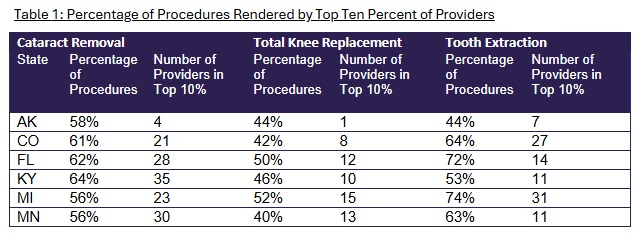Reference-based pricing is a tool that can help to address growing healthcare costs and ultimately improve healthcare affordability, especially for consumers with private health coverage. Two states —Oregon and Montana—have already implemented reference-based pricing (RBP), and several others have considered it or are in the process of implementation. RBP can be implemented in two ways- either through setting limitations on what insurers can reimburse for health services or by setting limitations on what providers can charge for services. The “reference price,” usually a percentage of what Medicare pays, can also function as a floor for provider payments. This is especially important to combat issues of access to behavioral health services, where payments are notoriously low, and workforce shortages and limited network participation issues are a significant barrier to patients seeking care.
Oregon has demonstrated significant savings since implementing caps in 2019 on what insurers can pay providers- $107.5 million over 27 months- and recently demonstrated reductions in out-of-pocket spending without unintended consequences such as hospital network disruptions or price hikes. `
In Washington, reference-based pricing was evaluated as a possible policy intervention in two reports prepared by Health Management Associates (HMA). The reports were produced for the Office of the Insurance Commissioner (OIC) to address healthcare affordability in 2023 and 2024. The first report included a landscape of the healthcare system in Washington as well as an overview of several policies for consideration, while the second report involved actuarial and economic analyses of selected policies to understand their potential impacts they might have in lowering healthcare costs and improving healthcare affordability for consumers.
HMA and Wakely, an HMA Company, worked closely with the OIC and other partners to select and model the impact of various policies. The process for developing a model to evaluate reference-based pricing involved Wakely accessing the state’s All Payer Claims Database (APCD), and included a review of claims from the state’s commercial and Medicaid health plans. To establish a baseline, Wakely compared different sets of healthcare services to what Medicare reimburses for that category of services, on average. This data showed vast differences in how much was being reimbursed by private plans relative to Medicare depending on service category- ranging from a high of 348% of Medicare for outpatient anesthesiology services to a low of 88% of Medicare for outpatient behavioral health services.
Recognizing the value of access to primary care services, Washington’s legislature established a goal in 2021 that 12% of healthcare dollars should be spent on primary care. Ever since, the state’s Healthcare Cost Transparency Board has been focused on tracking progress towards this goal. There had not been a similar focus on establishing targets for behavioral health services until this analysis. The low reimbursement rate for outpatient behavioral health services was not surprising and confirmed what had long been suspected as a contributor to challenges accessing outpatient behavioral health services for those with private insurance. Poor access to behavioral health services also contributes to healthcare affordability issues for consumers with private insurance, who end up going without, or paying for care out-of-pocket when they can’t find behavioral health providers that take private insurance. An analysis by the Kaiser Family Foundation found that privately insured adults who had a diagnosed mental health condition had twice as much out-of-pocket expense compared with those who did not have an identified mental health condition and that employers reported narrower networks for mental healthcare than their overall provider networks.
These findings, combined with the data from the APCD about low reimbursement rates, were catalysts for how Washington approached legislation to apply reference-based pricing for its public and school employee health plans in the 2025 legislative session. Recognizing that reference-based pricing could be used not only as a tool to improve affordability, but also to potentially increase access to important services, Senate Bill 5083, signed into law in May 2025, sets caps on how much insurers can pay providers for specific sets of services, but establishes floors for how much insurers must reimburse for primary care and outpatient behavioral health services to 150% of Medicare. Notably, Colorado was considering similar legislation, but it did not pass.
Healthcare affordability and access to behavioral health services are two persistent problems that contribute to poor health outcomes for many Americans and the relationship between the two is complex. It will be important to track how Washington’s new law impacts both of these issues to better understand and explore other questions, such as how expanded access to outpatient behavioral health services could improve overall healthcare affordability by addressing behavioral health issues before they become critical and/or emergent? Will it avoid or reduce traumatic and expensive trips to emergency room and crisis services? Washington’s new law offers an opportunity to closely evaluate and understand these types of questions and offers a potential model to address these intertwined and persistent problems.
HMA’s work on reference-based pricing was supported in part by Arnold Ventures.
As states struggles to address healthcare costs and invest in behavioral health, reference-based pricing and supporting analytics are one tool that HMA can offer to organizations. Contact us to learn more.



